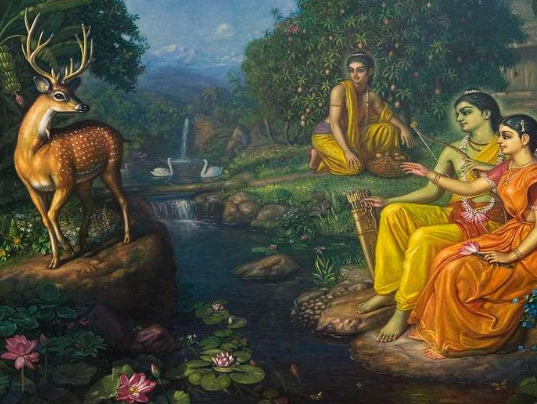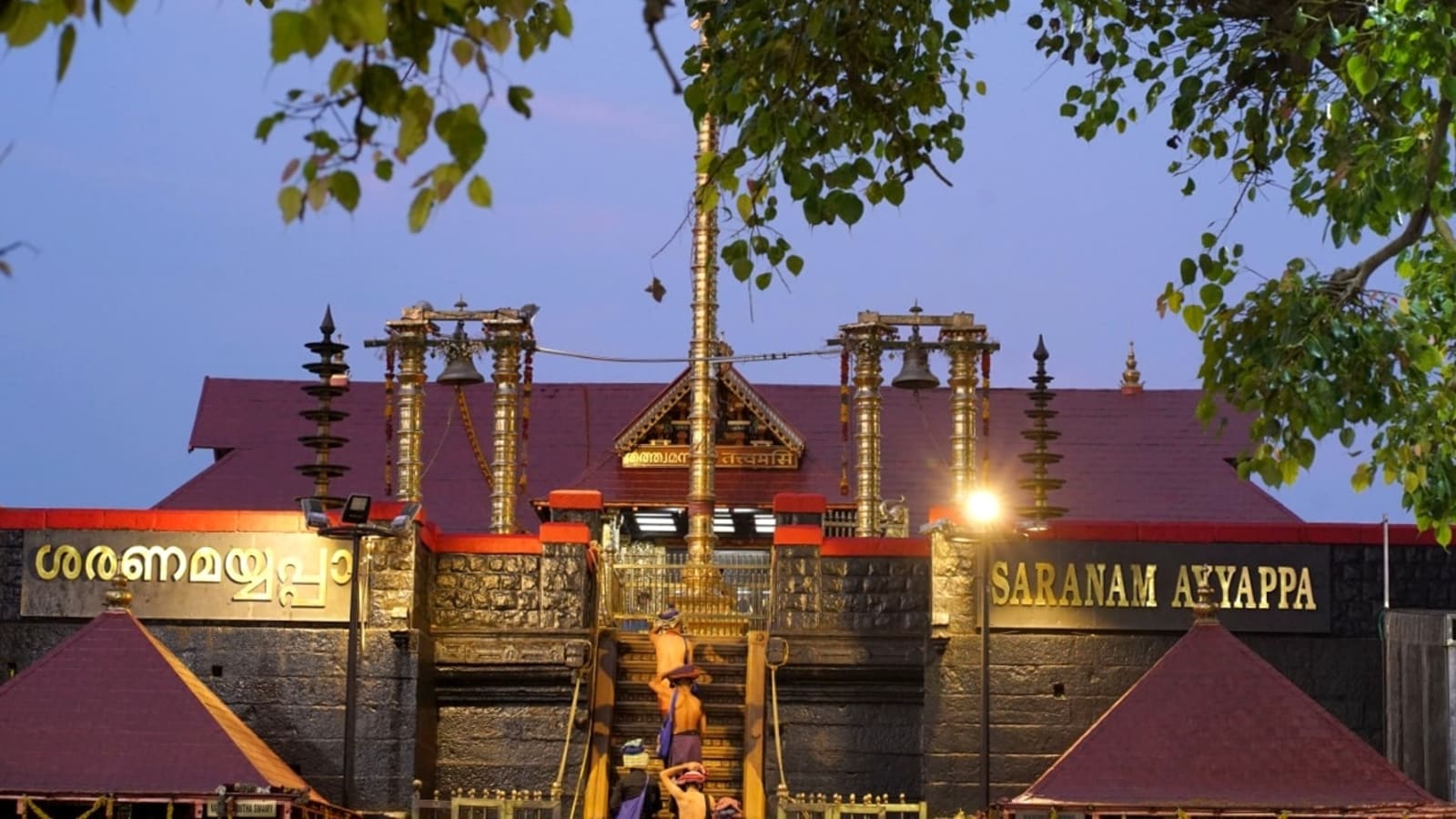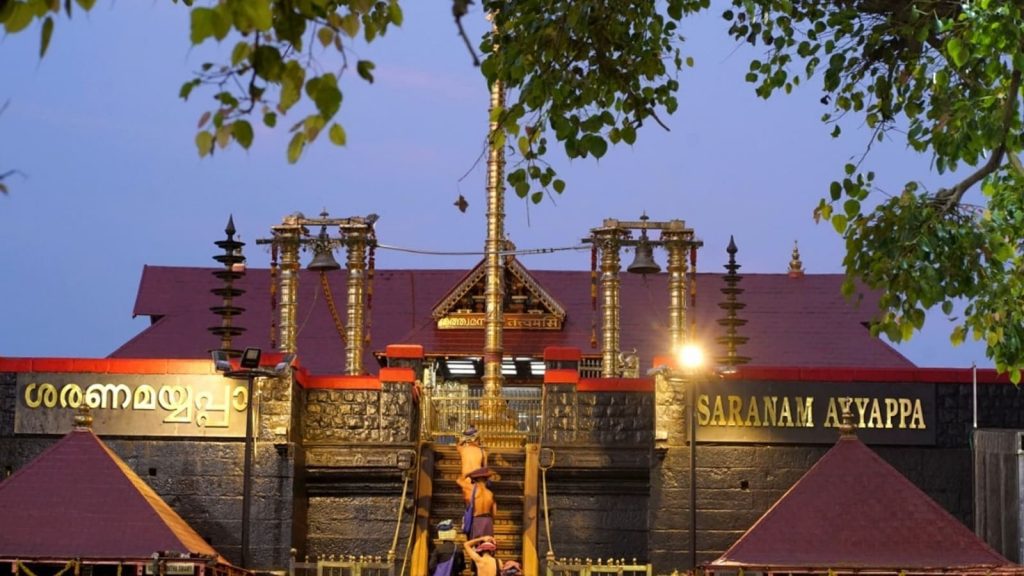Temples In Kerala
Sabarimala Temple-History,Story,Temple Details
Sabarimala is one the most sought pilgrimage sites in India. Surrounded by the lush greenery of the western ghats in God’s own country – Kerala, Sabarimala – the shrine of Lord Ayyappa, is open for worship only during specific periods of the year.
Lord Ayyappa, also known as Dharmasastha, is the son of Lord Shiva and Goddess Mohini (an avatar of Lord Vishnu). He is the symbol of the powerful union of two sects and is said to be the propagator of the best of both worlds.
Since time immemorial, his legend has taken Hindu devotees by storm. People believe observing the ritual before embarking on the journey to visit the Lord purifies their souls and rids them of their sins. Observing rituals are part and parcel of this pilgrimage which people do with a lot of dedication and devotion to God.
Such is the power of the Lord that people worldwide visit the Lord and participate in the honorous tradition.
The Story – Sabarimala temple history
One of the most frequently asked questions is – how many years old is Sabarimala temple? To answer this, one must know how the temple came to be. There’s nothing more fascinating than a beautiful backstory passed from generation. Even Sabarimala is no exception to this rule. Here are two stories or sthala Puranas that define the place. One relates to Lord Ayappa – the main deity worshipped here, and the other is about how the region got its name.
Story of how Sabarimala got its name

During Lord Rama‘s exile from his kingdom for 14 years, he traveled vastly through the Indian subcontinent. Soon after, Demon king Ravana abducted Goddess Seetha. Lord Rama started traveling south in her search. There he came across one of his most ardent devotees Sabari, who would wait for his arrival by gathering the fruits in the forest. Pleased by her devotion and dedication to serving him right, Lord Rama named the hill she was residing in – Sabarimala, after her to make her name immortal.
During Lord Rama’s exile from his kingdom for 14 years, he traveled vastly through the Indian subcontinent. Soon after, Demon king Ravana abducted Goddess Seetha. Lord Rama started traveling south in her search. There he came across one of his most ardent devotees Sabari, who would wait for his arrival by gathering the fruits in the forest. Pleased by her devotion and dedication to serving him right, Lord Rama named the hill she was residing in – Sabarimala, after her to make her name immortal.
The folklore of Lord Aiyappa
The story is about the triumph of good over evil. The story is about victory over one’s senses, and it is all about how one has to lead a life for personal happiness.
The story dates back to the initial days of the Padalam dynasty. The then-king Rajashekara and his consort queen Koperundevi were childless for years. Once when the king was hunting in forests, he found a young baby with a ‘mani’ tied around his neck crying in the bushes. On the advice of a sage, he took the baby home, named him Manikandan, and raised the baby as his own. Soon after, the royal couple had a biological son.
When Manikandan turned 12, it was time to declare him the prince. The minister was against this and poisoned the queen’s ears. He asked her to send Manikandan to the forest to bring tigress milk on the pretext of illness. Manikandan then set out on the journey to the forest carrying groceries and coconut – which represents the three eyes of Lord Shiva.
In the forest, he chanced upon Mahishi, the sister of Mahishasura. The hariharasuta was enraged seeing her atrocities and killed her after a ferocious battle. The heavenly deities showered flowers on the young boy for his brave act and for relieving them of a torturous era under Mahishi.
Lord Indra took the form of the tigress to help the Lord. Manikandan rode back to the kingdom on the tigress.
On witnessing this miracle, the royal couple and subjects of the kingdom worshipped the Manikanda. The queen asked for forgiveness for her terrible act, while the king declared him the prince. But Manikandan renounced the worldly pleasures and said since he completed his job, he wished to return to forests to continue penance.
The devastated king seeks Manikandan’s blessings to build a temple in his memory. On approving his wishes, Manikandan shot an arrow toward the sky, which fell on the hilltop of Sabarimala. The temple was built at the site to worship the Lord.
In the forest, he chanced upon Mahishi, the sister of Mahishasura. The hariharasuta was enraged seeing her atrocities and killed her after a ferocious battle. The heavenly deities showered flowers on the young boy for his brave act and for relieving them of a torturous era under Mahishi.
Lord Indra took the form of the tigress to help the Lord. Manikandan rode back to the kingdom on the tigress.
On witnessing this miracle, the royal couple and subjects of the kingdom worshipped the Manikanda. The queen asked for forgiveness for her terrible act, while the king declared him the prince. But Manikandan renounced the worldly pleasures and said since he completed his job, he wished to return to forests to continue penance.
The devastated king seeks Manikandan’s blessings to build a temple in his memory. On approving his wishes, Manikandan shot an arrow toward the sky, which fell on the hilltop of Sabarimala. The temple was built at the site to worship the Lord.
Reaching the Shrine
Lord Ayyappa’s shrine is on the hilltop of Sabarimala, surrounded by 18 hills, and is located nearly 4000 meters above sea level. People taking on the task of visiting the shrine follow a set of rituals even before visiting the temple. After fasting and observing celibacy for 40 days, pilgrims start their journey to the temple. They bathe in the Pamban river and offer prayers to Devi Mallikappurathamma. After the offerings, they start their trek toward the shrine.
On reaching the footsteps of the main deity, pilgrims offer their obeisance to Vavur Swami and Kadutha Swami at the foot of the steps. Only those pilgrims carrying Irumudikkettu climb up the 18 steps of Sabarimala temple. Others take a separate path for Lord’s darshan.
Several local traditions are offered to the Lord to help them navigate their difficult phases of life.
Sabarimala Temple Details
Temple opening date:
The temple remains open for the first five days of each Malayalam month.
In 2022, the temple was opened on 16.11.2022 in November for Mandala Pooja Maholsavam. The temple will close on 27/12/2022 at 10 PM after mandala pooja, to be opened again on 30.12.2022 for makaravilakku.
In 2023, the temple will be open again till 20.1.2023 for makaravilakku. After that, the temple will open for the first five days of each Malayalam month in the following months.
Temple Timings: Opens at 4 AM and closes at 11:00 PM; Temple remains closed between 1:30 PM to 4:00 PM.
Dress Code: Traditional Indian outfit
We hope the blog gave you a glimpse of the Whats and why’s of Sabarimala temple. Leave your feedback in the comment section, and we will ensure to answer your queries or respond to your comments.
Significance of 18 steps:
A devotee climbing each step is dictated to overcome worldly desires and make the path to obtain moksha easier.
Steps 1 – 5: Depicts Pancha indiryas – sight, smell, sound, touch, and taste.
Steps 6 – 13: Depicts the eight rasas – Kama, krodha, lobha, moha, mada, matsara, asooya, and dhoombh.
Step 14-16: Trigunas – Satvika, Rajas, and Tamas.
Steps 17-18: Vidya and Avidya.
Irumudikkettu: Packs containing offerings like coconut, ghee, camphor, and rice




Hi, Your blog is worth appreciating, it had a lot of useful information!
If you are looking for Best pandit in Bangalore for Grihpravesh pooja
Om Pooja Path offers the Best pandit in Bangalore for Grihpravesh pooja – Om pooja path.
We will designate an experienced Pandit in Bangalore from our staff to do the Grihapravesh pooja in accordance with the Vedic rites based on your preferred language. Om pooja path offers the best pandit in Bangalore for Grihpravesh pooja.
We may also provide the essential flowers, leaves, homa samagri, and other pooja materials along with the necessary pooja products and resources.
For more information and details visit :
https://ompoojapath.com/best-pandit-in-bangalore-for-grihpravesh-pooja-om-pooja-path/